Siri. Alexa. Cortana.
These three virtual assistants have become household names and a regular part of our daily lives. In under ten years, we’ve actually started to become reliant on our voice search assistants, turning to them to do everything from help us find a local ice cream parlor to play our favorite music to entertain us when we ask it questions like “Do you love me?” just to see what it says.
Voice search is fast becoming more common, and conversational AI is developing quickly to keep up. This isn’t a trend that’s going to slow down; it’s estimated that by next year, 50% of all searches will actually be voice searches. Because of this, you need to optimize for the rank zero snippet, which is essentially the one and only answer that voice assistants will give when responding to user questions.
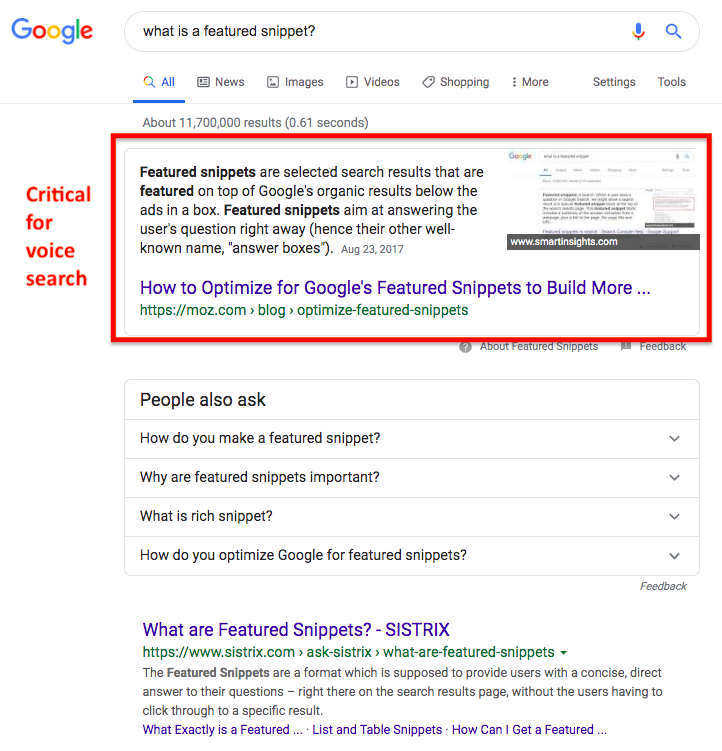
As a result of voice search, you’ll be getting less traffic to your site, because people will hear just one answer to their query – which means no full page of results to scroll through. Click To Tweet
Marketers have made a career from the consumer’s tendency to get a little distracted during the journey of seeking answers to a question, but now that they’re only getting one specific answer from an audio speaker, there are no visual distractions and no backlinks to send them bouncing around your site. It’s becoming more difficult, in other words, to display your brand throughout the users’ journey.
Voice search and conversational AI have started to have a dramatic effect on SEO – called VSEO – and will continue to play a crucial role in the future of search engine optimization.
Here’s what you need to know to stay up to date on what these changes are and how they impact your marketing strategy.
What Is Voice Search?
Voice search is the technology that enables speaking into a search engine (as opposed to typing) to request information. That information can be anything from “where is the nearest dentist” to “who is Max Headroom” to “call Mom”.

Common applications of voice search include:
- Making search engine queries
- Clarifying specifics of the request
- Requesting specific information, such as a stock quote or sports score
- Launching programs and selecting options
- Searching for content in audio or video files
- Voice dialing
The always-increasing prevalence of both mobile devices and The Internet of Things (IoT) has resulted in the rise of voice search. It’s so convenient to ask Alexa or Siri to look up the showtimes for a new movie or set an alarm, especially if we’re driving or otherwise unable to use our hands.
But even if you’re just sitting at your desk, it’s almost always preferable to verbally ask a question rather than type the query into a mobile device with its tiny on-screen keyboard that inevitably “autocorrects” to the wrong word:

Dive Deeper:
What Is Conversational AI?
Conversational AI is the use of tools like chatbots, messaging apps and voice assistants that use Natural Language Processing (NLP), a subset of Artificial Intelligence (AI), to provide direct answers in a conversational way.
NLP “enables computers to process and understand human language. Recent advances in machine learning and, more specifically, its subset deep learning have made it possible for computers to better understand natural language.” In other words, chatbots like Siri are nothing more than well-programmed bots that have been trained to spout off information in a friendly, human way:

If you’re interacting with a chatbot, they’ll start by saying “hello” and ask what they can help you with. Siri will follow up with “is this what you were looking for?” instead of giving a mechanical “no matches found” or “invalid, please try again.”
Unlike basic phone navigation menus, chatbots and conversational AI tools are able to go back and forth with a customer in a way that resembles an actual dialogue.
Dive Deeper:
The Difference Between Voice Search & Conversational AI
Voice search is simply the practice of looking up information by speaking into a search engine (often on a smartphone). These searches can yield direct, straight-forward results, such as:
- Me: How old is George Clooney?
- Google Assistant: George Clooney is 58 years old.
That’s it. End of story.
Conversational AI, on the other hand, is the technology that allows voice assistants to feel semi-human, responding to users in “real” and conversational ways, like:
- Me: Hey Siri, what is Inception about?
- Siri: ‘Inception’ is about dreaming about dreaming about dreaming about dreaming about something or other. I fell asleep.
In many cases, people are using conversational AI tools to make voice searches, but not always. Most people still interact with a chatbot, for example, by typing messages directly to them.
The bottom line is that the use of both voice search and conversational AI are increasing and, as people get even more used to all the ways they can use this technology (like advanced chatbots), this trend will soon become the norm:
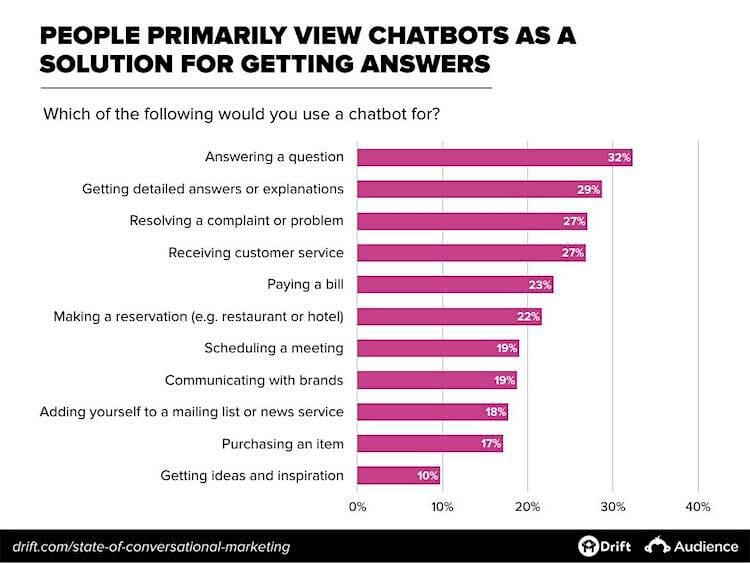
How Voice Technology Will Change Online Traffic
Voice search and conversational AI are going to directly impact your online traffic in ways that are both positive and negative for your marketing campaigns. Let’s take a look at what areas you will need to keep an eye on and update:
- Faster load time – Voice technology is becoming favored over typing queries because it’s not only more convenient, but faster and more accurate, too. Research demonstrates that voice recognition software is:
- 3X faster than typing (in English) on a mobile screen
- 20.4% more accurate than typing (in English) on a mobile screen
And Backlinko’s analysis of 10,000 Google Home results also shows that voice search is faster:

- Less traffic – More voice searches with just one answer means that there’s going to be less traffic to your site, which decreases your odds of capturing their attention with another link or getting their email in exchange for a great lead magnet.
- Altered customer journey – With voice search, instead of looking up “clothing alterations” and diligently reading reviews of the top ten results, I can just ask Siri for the “highest-rated clothing tailor near me.” She’ll give me one name and ask if I want directions there. So the customer journey will likely be more impulsive, reducing the research stages because you’re only presented with one option (unless you ask for more).
- Rank zero snippet – Since 40.7% of all voice search answers come from a featured snippet, if your marketing is strong enough, you could be the one hitting that rank zero snippet (which is essentially a “featured snippet” that voice assistants will convey to searchers). This can give you an enormous competitive advantage. Of course, this is only good news for one brand.
- More personalization – Voice technology is driving more personalization, meaning that searchers are getting content that’s more relevant and valuable to them. Personalized experiences will increase usage, and with AI’s evolving deep learning abilities, the conversational AI tools will be able to continually deliver more personalized suggestions along the way. This is important, because a strong user experience is always good news for a brand.
- Long-form content – Google still likes long-form content: The average result that a voice query draws from is 2,312 words. So if you’ve been putting in a lot of time and effort to create 10x content, keep up the good work!
Dive Deeper:
What Needs to Change
There’s clearly both advantages and disadvantages that come with the increase of voice search, but either way, we need to adapt our marketing strategies. Let’s take a look at the three key changes you need to make with your content marketing campaigns.
Optimize for the Rank Zero Snippet
You’ve heard us mention the “rank zero snippet” (also known as “position zero,” “featured snippet” or also “zero-click search”) several times in this post, and that’s because it’s of crucial importance when it comes to voice search.
When users make a voice search query, they’re given one answer, similar to the featured snippet that appears at the top of a traditional search result page. The difference, of course, is that this is the only answer they’re given. That rank zero snippet is how you can get your content in front of users via voice search.
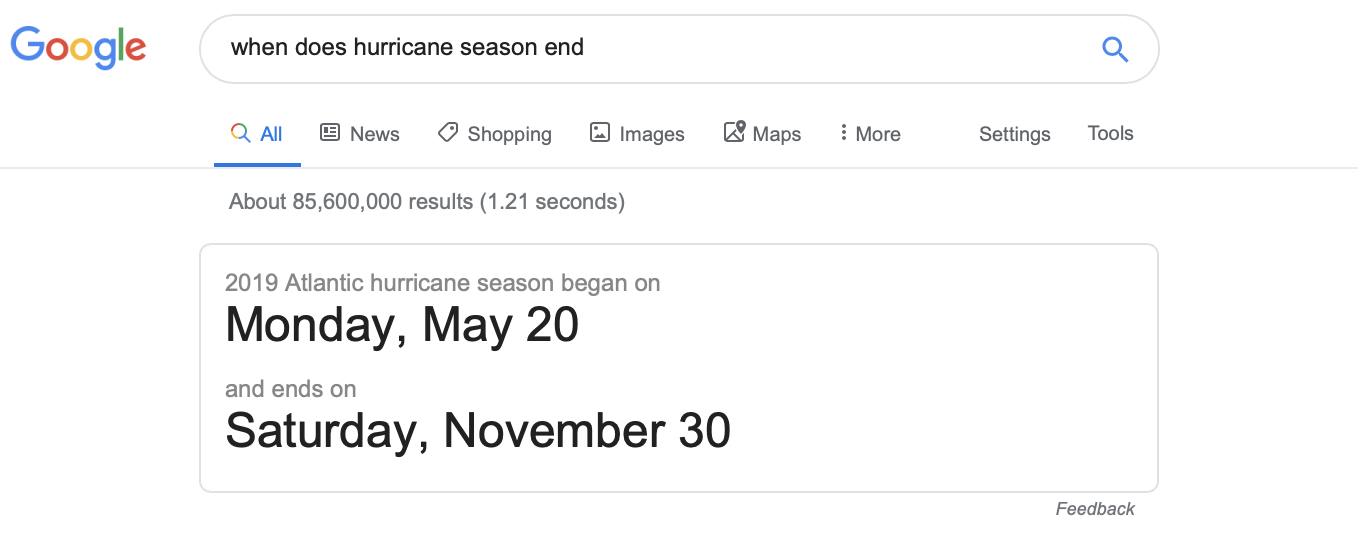
In order to compete for the position zero snippet, do the following:
- Structure key information in your content as if answering a question. In this post, for example, the first paragraphs under “what is voice search” and “what is conversational AI” provide crucial information for the post we’re writing, but they’re also short, concise answers that could do well in featured snippets. This is even more effective if you’re using H2s as questions (starting with who, what, why, where, when, how) to lead into the answer:

- Keep it short. The average featured snippet is 40-50 words and is always written in clear, straightforward language.
- Consider adding lists to your content. Short bullet lists may not show up in voice results as often, but they can do well in featured snippets, so consider using them just in case.
- Target long-tail, conversational keywords. We’re going to talk about this a little more in just a second, but voice search is much more conversational, so you’re looking at long-tail keywords instead of short-tail keywords. Keep this in mind when doing your keyword research, and make sure your target keyword is in the content itself.
Dive Deeper:
Adjust Your Keyword Research Strategies
As we just mentioned above, keyword research is going to be a little different when you’re targeting voice search queries.
If you’re sitting at a computer, for example, and want to find a local coffee shop that has dairy-free options, you might search “orlando coffee, dairy-free.” If you use voice search, however, you might say “Hey Google, where’s the closest coffee shop near me with dairy-free options?”
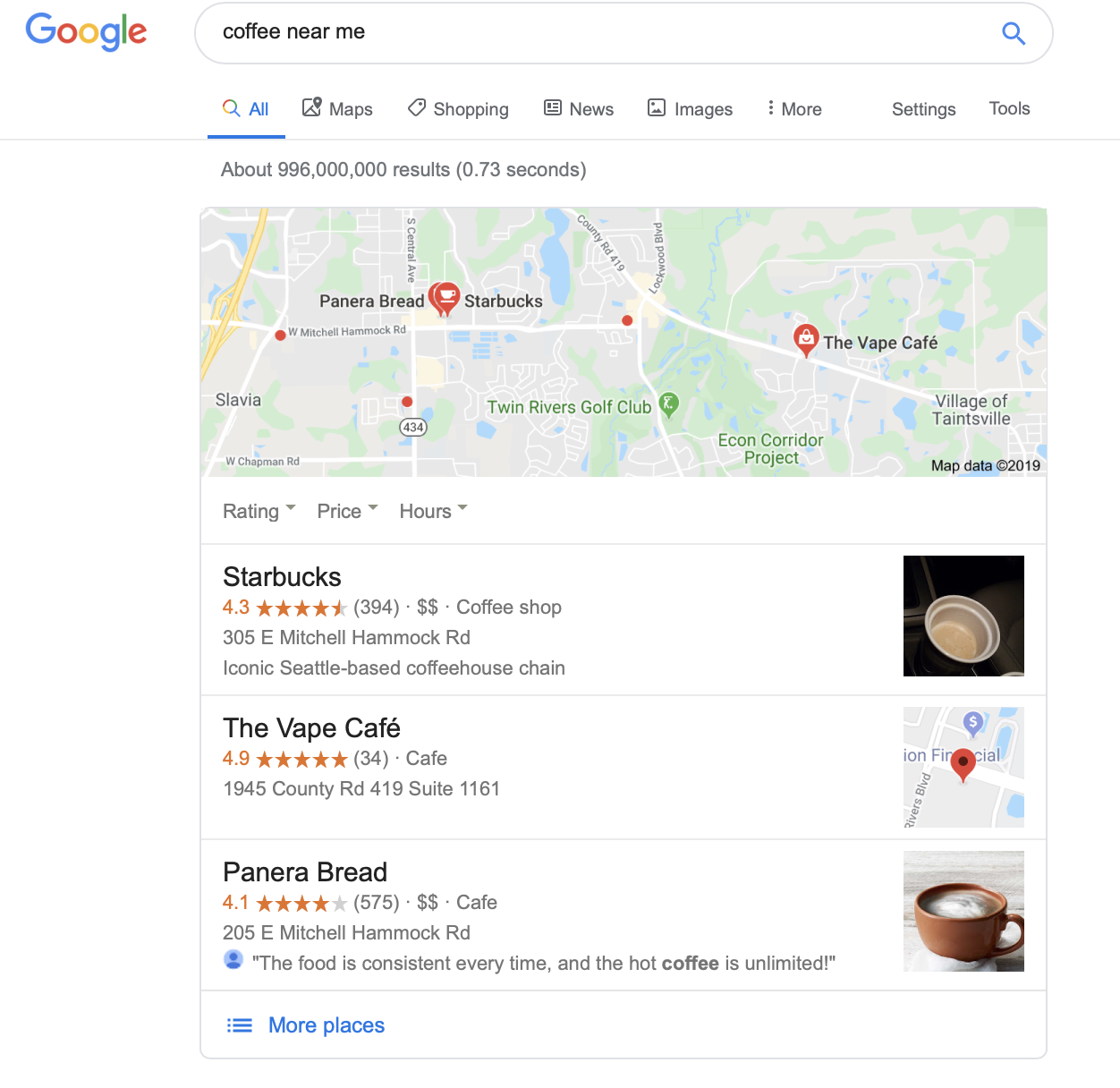
We’re seeing an enormous surge of “near me” keywords, but they’re also becoming more conversational, addressing their voice assistants almost like an actual person. They’re a little more specific, so content that capitalizes on specific niche needs may do well.
Your keyword strategy needs to account for that. Go all in on location-based keywords if this is relevant to you and you’re trying to target local traffic, but you’ll also want to focus on more long-tail, conversational keywords. Try to incorporate more conversational keywords into your H2 headers, and consider looking for question-based keywords with a tool like SEMrush to see exactly what – and how – people are asking:

Dive Deeper:
Create More Voice-Friendly Content Types
Certain types of content will work best when it comes to voice search optimization, and those are typically going to be posts that appeal to three different search query intents: informational queries, navigational queries and transactional queries:
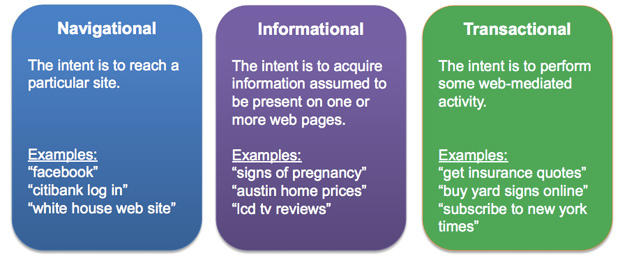
Navigational intent is all about trying to find store locations, customer service information or businesses that serve the purpose they’re searching for. Having a fully optimized Google My Business profile will definitely help here, but having a list of the products and services you offer and distributing press releases can also be valuable for this purpose.
Informational intent will help answer questions that searchers have and provide valuable information. Think detailed blog posts, guides and how-to content. People who ask how much it costs to replace an AC unit want to be guided to a post with details of the pros and cons of different units and their pricing points.
Transactional intent is focused on either researching a potential buying decision or actively making a purchase. Someone who asks about the best-rated walking shoes, for example, is ready to make a purchase soon. Videos, online product information, comparison reviews and stories detailing the use and value of your products are all great choices here.
Keep in mind that as you’re creating content, Google now offers Actions that can be used during voice searches. Users can ask Google to “talk to my favorite shoe store” or “check on my order status.” You can see some examples here:

This helps with both navigational and transactional intent searches, so go to your Actions console and consider setting up some of these options to add more voice functionality to your business and drive more mobile, voice-driven actions. As we’re moving more into voice search across the board, this will give you a strong competitive edge that users will respond to.
Dive Deeper:
Final Thoughts
The rise of voice search is changing the game for marketers and brands, and it’s essential to adapt now if you haven’t already. It’s not that traditional search is now null and void – it’s not, and it won’t be for quite some time, if ever – but you’ll need to structure your content in a way that appeals to both traditional SEO and voice search engine optimization.


